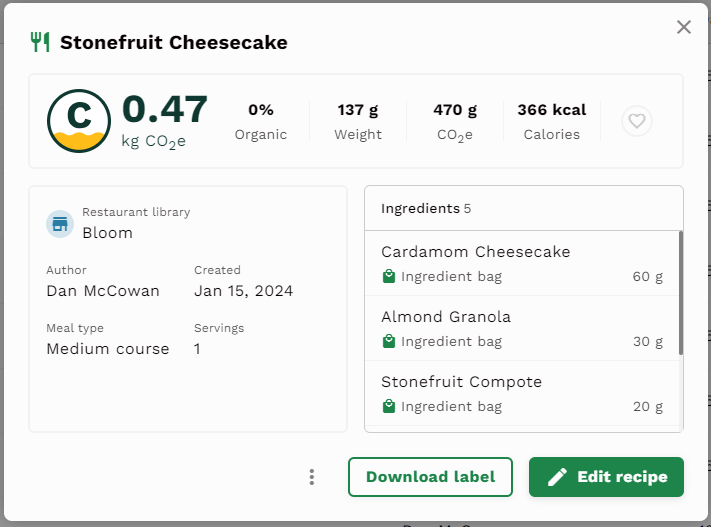
Conestoga is the first academic institution in Canada to adopt software that measures the carbon footprint of meals at the student-run restaurant Bloom.
The student-run restaurant Bloom on Conestoga’s Waterloo campus recently partnered with Klimato, a new software that measures the carbon impact of meals to give the chefs and patrons handy information to combat greenhouse gas emissions for more sustainable dining.
Bloom is the first restaurant in Ontario to adopt the tool, employing it when creating its winter menu.
This new partnership advances green initiatives already underway at Bloom, which was also the first restaurant in Canada to put greenhouse gas icons on its menu. Since winter 2023, Bloom has been labelling the emissions impact of meals as part of a Living Lab research project funded by Colleges and Institutes Canada which included a focus on food waste and packaging.
Students previously calculated the carbon footprint of dishes, but Klimato makes the process much easier and more accurate by including regional data in its method certified by the World Resource Institute.
“The goal is to give faculty and students access to the software so that they have a chance to interact with it. There is so much to learn about sustainability and food, and this gives an experiential opportunity to do just that,” said Nicole Detlor, director of the Food Research and Innovation Lab.
For example, Detlor was surprised to discover that rice produces more greenhouse gas to get to the dinner plate than pasta. That’s in part because of the intensive farming practices used to grow the grain.
Klimato’s calculations are based on data that includes ingredients, cultivation, processing and transportation.
An average global lunch or dinner has a carbon footprint of about 1.6 kg CO2e (carbon dioxide equivalent), according to the World Wildlife Fund (WWF). To meet the UN's climate goals outlined in the Paris Agreement, that number should not exceed 0.5 kg CO2e to be defined as “climate friendly.”
The Klimato labelling system ranks meals by five categories: very low, low, medium, high or very high. The simple menu icons will allow Bloom patrons make informed choices about the environmental impact of the food they eat, and the calculations can guide the creation of dishes served at the restaurant by swapping ingredients to lower the environmental impact.
“Giving the students the opportunity to make those little discoveries for themselves as they use the tool, I think will be really important because they’re the ones in the future that will be setting menus. The more that they know, the more decisions they can make with sustainability in mind,” Detlor said.
Bloom is an interactive live classroom that’s part of Conestoga’s School of Hospitality & Culinary Arts, which provides a range of programs to serve the workforce needs of the growing hospitality industry.
The Conestoga Food Research & Innovation Lab meets the needs of industry through education, training, research and technical expertise. The lab’s advanced facilities have proved essential in advancing solutions for businesses in the food and culinary sector by providing innovative solutions and support throughout the product development cycle.
